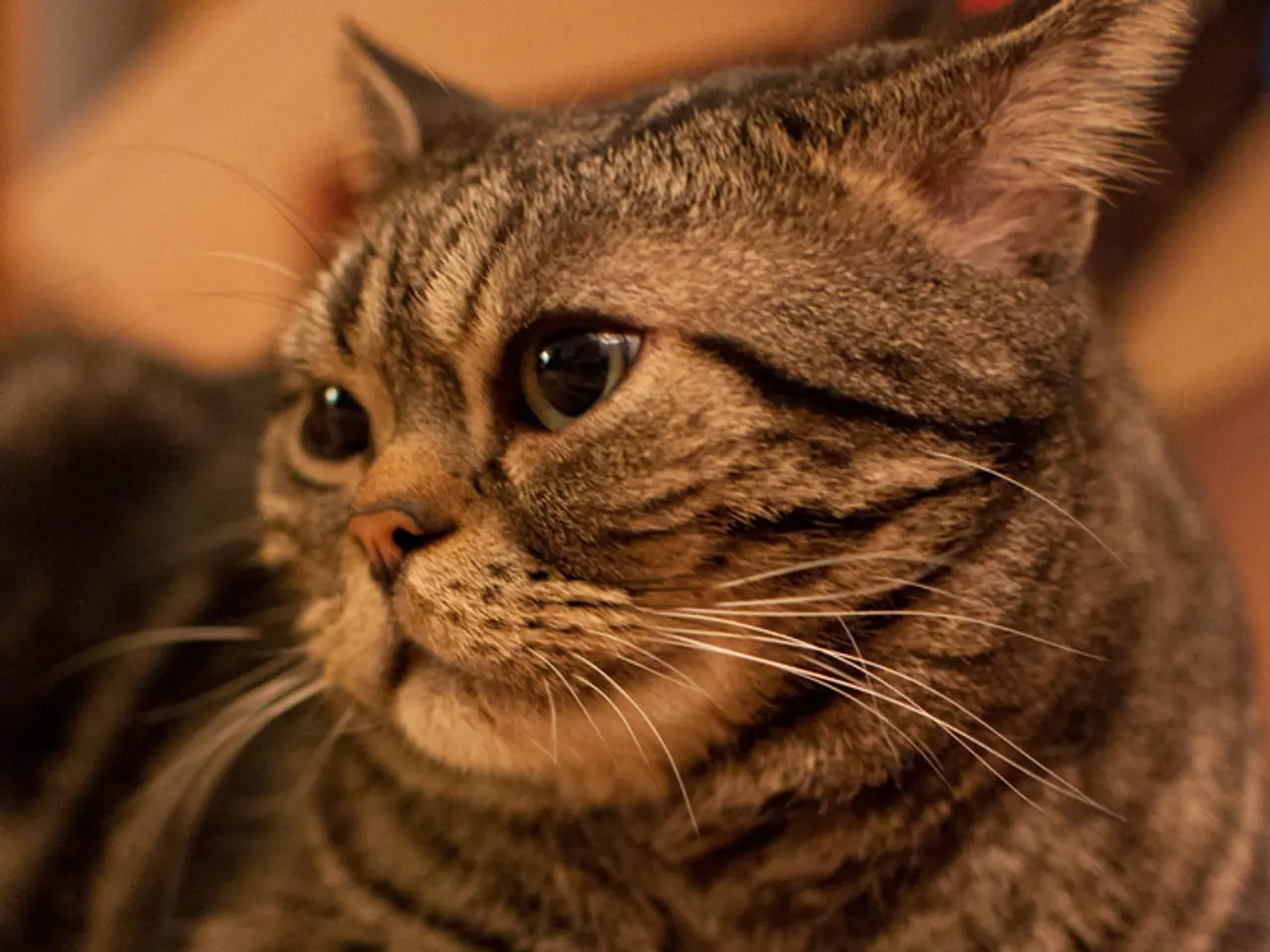Cats undergo cyclical periods, distinct from humans, referred to as the estrous cycle.
In the world of feline behaviour, understanding a cat's heat cycle, or estrus, is essential for cat owners. This recurring reproductive phase prepares female cats for mating, and it's marked by hormonal and behavioural changes. However, there are some common misconceptions about this cycle, particularly surrounding bleeding.
Female cats are not typically prone to bleeding during their heat cycles, unlike their canine counterparts. Instead, they exhibit behavioural signs such as increased vocalization, restlessness, and affectionate behaviour [1][3]. If a female cat is observed bleeding from the vulva, it's likely due to a medical issue such as infection, injury, or other reproductive tract problems rather than a normal part of her estrous cycle [1][3].
It's crucial to contact a vet immediately if a female cat is bleeding. Bleeding from a cat's genital area is not normal and may indicate a medical issue [2].
Cats can reach sexual maturity and begin their first heat cycle as early as four to six months of age [4]. This early onset can cause concerns for unspayed kittens, as they may have their initial heat cycle prior to being fully grown [4]. Spaying a female cat can help avoid unwanted pregnancies and prevent behaviours associated with the heat cycle [5].
Geographic and environmental factors significantly influence when cats go into heat. Outdoor cats typically cycle more seasonally, with heat cycles occurring more frequently in spring and summer. However, indoor cats may cycle year-round due to artificial lighting [2]. In warmer regions or with consistent light exposure, cats may experience heat cycles year-round [6].
Spaying provides proven health benefits, reduces behavioural stress, and helps manage stray cat populations [5]. By understanding your cat's heat cycle and taking proactive measures such as spaying, you can ensure a healthier, happier life for your feline friend.
References:
[1] The Spruce Pets. (2020). Understanding Feline Heat Cycles. Retrieved from https://www.thesprucepets.com/cat-heat-cycle-4196180
[2] VCA Animal Hospitals. (2020). Feline Heat Cycle. Retrieved from https://vcahospitals.com/know-your-pet/feline-heat-cycle
[3] ASPCA. (2020). Cat Heat Cycles. Retrieved from https://www.aspca.org/pet-care/cat-care/cat-behavior/cat-heat-cycles
[4] Cornell Feline Health Center. (2020). Feline Reproductive System. Retrieved from https://www.vet.cornell.edu/departments-centers-and-institutes/cornell-feline-health-center/health-information/feline-health-topics/reproductive-system
[5] Humane Society of the United States. (2020). Spaying and Neutering Your Cat. Retrieved from https://www.humanesociety.org/resources/spaying-and-neutering-your-cat
[6] BluePearl Specialty and Emergency Pet Hospital. (2020). Feline Heat Cycle. Retrieved from https://www.bluepearlvet.com/pet-health-resources/feline-heat-cycle
- Technology and geographical data can help predict the heat cycles of indoor cats, enabling owners to more effectively manage their feline friends' lives.
- The lifestyle changes that come with home-and-garden modifications, such as proper lighting, can influence the timing of a cat's heat cycle, particularly for indoor cats.
- Regular veterinary check-ups are essential for maintaining a pet's overall health, including monitoring for reproductive tract issues that may cause bleeding, which is not a normal part of a cat's heat cycle.




